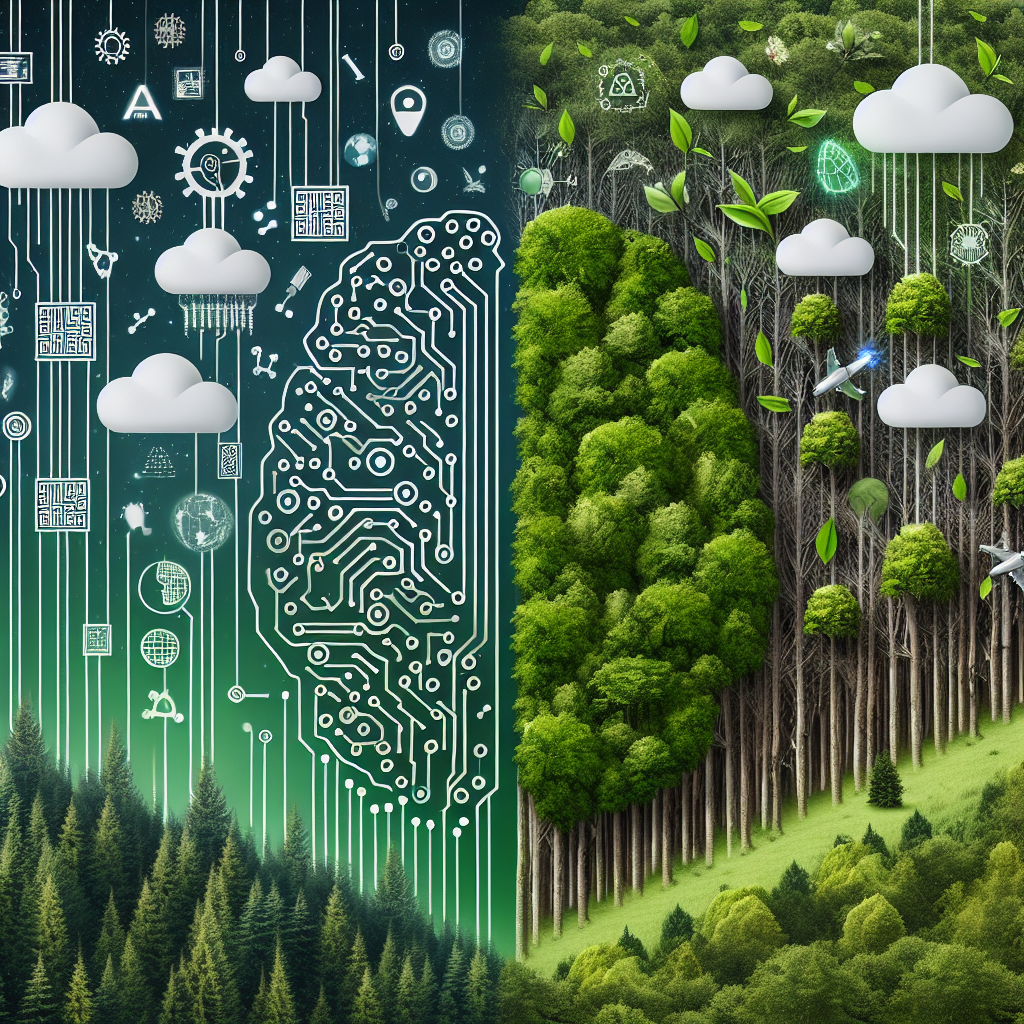Deforestation is a major global issue that is contributing to climate change, loss of biodiversity, and environmental degradation. According to the World Wildlife Fund, an estimated 18.7 million acres of forest are lost each year, equivalent to 27 soccer fields every minute. This alarming rate of deforestation is driven by factors such as agriculture, logging, and urbanization.
In recent years, there has been a growing interest in using artificial intelligence (AI) technology to combat deforestation. AI has the potential to revolutionize the way we monitor, manage, and prevent deforestation by providing real-time data and insights that can help governments, organizations, and communities make more informed decisions.
One of the key ways AI is being used to combat deforestation is through satellite imagery analysis. By using AI algorithms to analyze satellite images, researchers and conservationists can track changes in forest cover, identify areas at risk of deforestation, and monitor the effectiveness of conservation efforts. This technology allows for more accurate and timely monitoring of deforestation, enabling stakeholders to take action before irreversible damage occurs.
Another way AI is being used to combat deforestation is through the development of predictive modeling tools. These tools use AI algorithms to analyze historical data on deforestation patterns, environmental factors, and human activities to predict where deforestation is likely to occur in the future. By identifying high-risk areas, policymakers and conservationists can prioritize their efforts and allocate resources more effectively to prevent deforestation.
AI technology is also being used to improve the efficiency of forest management practices. For example, AI-powered drones can be used to monitor forests, identify illegal logging activities, and assess the health of trees. By automating these tasks, AI can help reduce the time and cost associated with forest monitoring and management, allowing for more resources to be allocated to conservation efforts.
Furthermore, AI is being used to empower local communities to participate in forest conservation efforts. By providing communities with access to AI-powered tools and data, they can better understand the impact of deforestation on their livelihoods and take action to protect their forests. This participatory approach to conservation can help build a sense of ownership and responsibility among local communities, leading to more sustainable and effective conservation outcomes.
In addition to these applications, AI is also being used to combat deforestation through innovative partnerships and collaborations. For example, tech companies, conservation organizations, and governments are coming together to develop AI solutions that can address specific deforestation challenges, such as illegal logging, land use change, and forest fires. By pooling their resources and expertise, these partnerships can leverage the power of AI to tackle deforestation on a global scale.
Despite the potential of AI to combat deforestation, there are also challenges and limitations to consider. For example, AI technologies are not foolproof and can be prone to errors, especially in complex and dynamic environments like forests. Additionally, there are ethical considerations to take into account, such as data privacy, transparency, and bias in AI algorithms. It is important for stakeholders to address these challenges and work together to ensure that AI is used responsibly and ethically in the fight against deforestation.
In conclusion, AI technology has the potential to revolutionize the way we monitor, manage, and prevent deforestation. By leveraging the power of AI algorithms, satellite imagery analysis, predictive modeling, and innovative partnerships, we can make significant strides in protecting our forests and combating deforestation. However, it is important for stakeholders to work together to address challenges and ensure that AI is used responsibly and ethically in the fight against deforestation.
FAQs:
Q: How does AI help combat deforestation?
A: AI helps combat deforestation by providing real-time data and insights through satellite imagery analysis, predictive modeling, and innovative partnerships. This technology allows for more accurate and timely monitoring of deforestation, enables stakeholders to prioritize their efforts, and empowers local communities to participate in conservation efforts.
Q: What are the limitations of using AI to combat deforestation?
A: AI technologies can be prone to errors, especially in complex and dynamic environments like forests. Additionally, there are ethical considerations to take into account, such as data privacy, transparency, and bias in AI algorithms. It is important for stakeholders to address these challenges and work together to ensure that AI is used responsibly and ethically in the fight against deforestation.
Q: How can local communities participate in forest conservation efforts using AI?
A: Local communities can participate in forest conservation efforts using AI by providing them with access to AI-powered tools and data. This can help communities better understand the impact of deforestation on their livelihoods and take action to protect their forests. This participatory approach to conservation can help build a sense of ownership and responsibility among local communities, leading to more sustainable and effective conservation outcomes.

